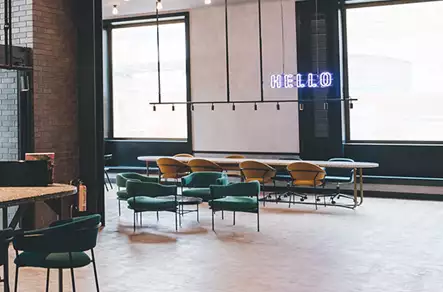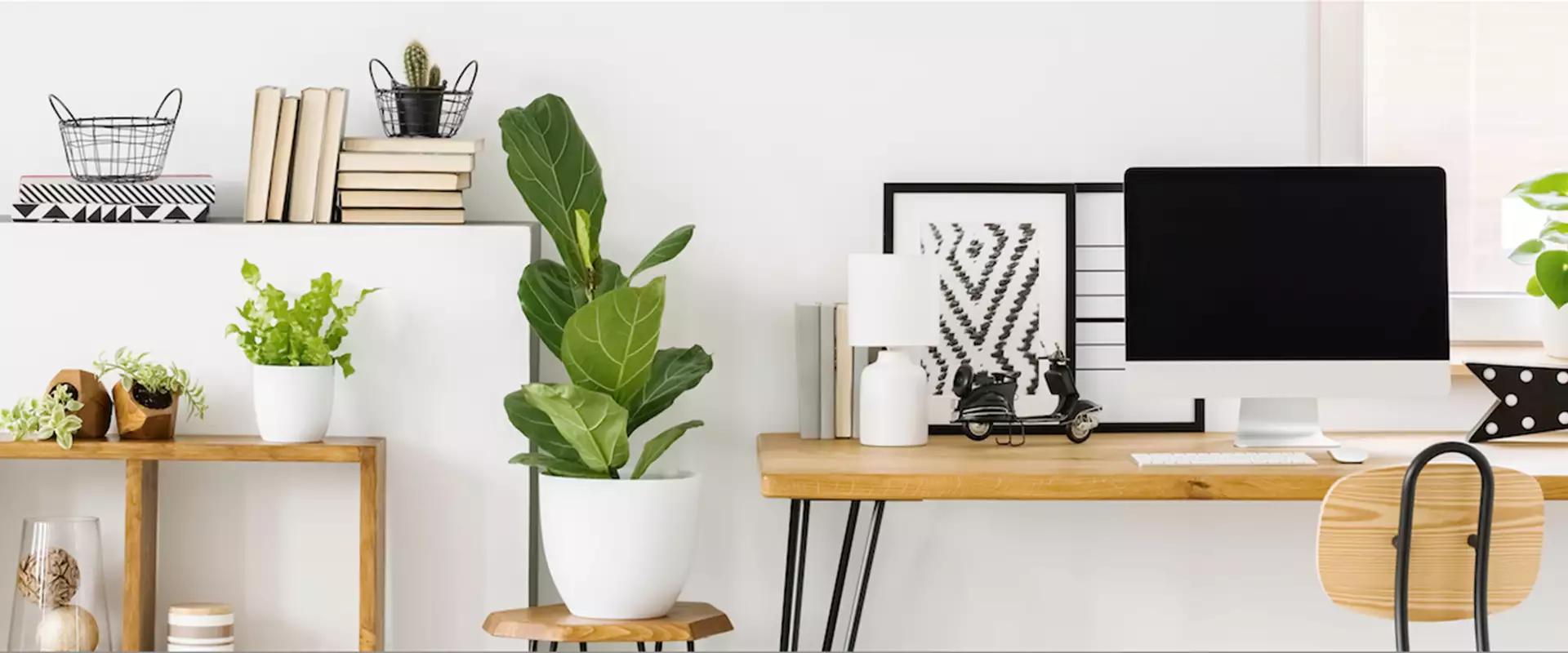Working from home can be a challenging feat if you don't create the right space. Here's a step-by-step plan on how to build the optimum working environment to help you stay happy and focused.
In a bid to reduce the spread of coronavirus, companies across the UK have switched to home working and many remote-work novices are trying to figure out the most efficient and comfortable way to work under unusual circumstances.
While working from bed or the sofa is a tempting idea, it's far from a long-term solution. It's important to think about how you can create a workstation that best emulates an office environment over the coming weeks while working from a shared workplace isn't an option.
Following on from our exploration of how to create the optimal office space design for productivity, we turn our attention homeward. Here are seven steps for setting up the perfect temporary work base at home.
1. Select the right place
Floating desks are great if you're limited for space
Before anything else, make sure you select the right location for your new workstation if you don't already have an office. This is one of the most essential steps. If possible, try to find a quiet part of the house, to create a distinct working zone that doesn't blend into home life.
If you simply don't have the space and have to make the most of your bedroom or living areas, try getting creative. Bookcases make great dividers to limit distractions and segregate between home and work zones.
If there isn't enough room to erect a standing desk, check out Wayfair's Eddie Floating Desk, which can be flipped down in the evening to maximise on space.
2. Make the most of lighting
Studies show that poor lighting can be detrimental to productivity at work – it can lead to drowsiness and difficulty maintaining focus and motivation. On the contrary, harsh artificial light can trigger headaches and migraines.
Try to locate your desk next to a window to flood yourself and your work with natural light. Exposure to natural light will help your body stick to its natural circadian rhythm so that it knows when to feel alert and energetic and when to feel sleepy.
Or, if this isn't an option, Workspace customers can get 10% off designer lighting at Fabiia with Workspace Perks to create the perfect ambient desk lighting.
3. Think carefully about ergonomics
The Sihoo M57 Ergonomic Office Chair
The way you sit at your desk is key. The highest pressure placed on the discs in your lower spine occurs when you are in the seated position and leaning forward.
To protect your spine and neck, invest in an ergonomic chair, ideally with adjustable arms so you can rest your forearms while using a keyboard and mouse. You will want your forearms to be roughly in line with the keyboard and mouse pad to reduce unwanted strain on your wrists.
IKEA's Markus chair is an affordable, sturdy option that offers a long back and integrated headrest. You can adjust it for height, tilt, and the back can be locked in place or reclined. If you're looking for a greater level of adjustability, the Sihoo M57 Ergonomic Office Chair is another reliable option.
For more guidance on how to look after your neck and back at your desk, hear from the experts in Put Your Back into it.
4. Get green fingered
Plants not only brighten a home office environment, the benefits of indoor plants run deeper than just aesthetics.
"Simply enriching a previously spartan space with plants served to increase productivity by 15 percent," says lead author Marlon Nieuwenhuis in conversation with Science Daily. Our green friends can induce feelings of being relaxed, tranquility and simply existing, which can aid mental recovery and stress relief.
5. Keep air quality high
Most homes nowadays are tightly sealed, meaning that very little fresh air gets in and air pollutants can linger. Make sure you keep your home well-aired by opening your windows or skylights for 5-10 minutes several times a day.
But be careful, pollutants can also travel inside. Check the government's Daily Air Quality Index to avoid opening windows at times when pollution levels in your area are high or very high.
Also, try to keep your home at a comfortable temperature of 18 °C. High humidity can make it easier for mould to grow and reduce air quality.
6. Add a splash of colour
Your desk space should be a place where you enjoy spending time. It should be a reflection of your personality. Add artwork and picture frames to make working enjoyable.
If you don't have the resources to fully re-decorate your space, This Is Rude sell inspirational prints bursting with colour to brighten up any office and offer free shipping on all orders over £100.
7. Create a "Please Do Not Disturb" sign
If you're sharing your house with others, creating a "Please Do Not Disturb" sign can be a gentle reminder that you're in work mode, rather than home mode. It can be hard for others around you to remember this crucial fact, especially if you're working in a living space. But a simple sign could save you a lot of distractions, so you can concentrate on business.
For real-time updates on where you can access business support during the coronavirus outbreak, follow Workspace on Twitter, Instagram, Facebook and LinkedIn.



